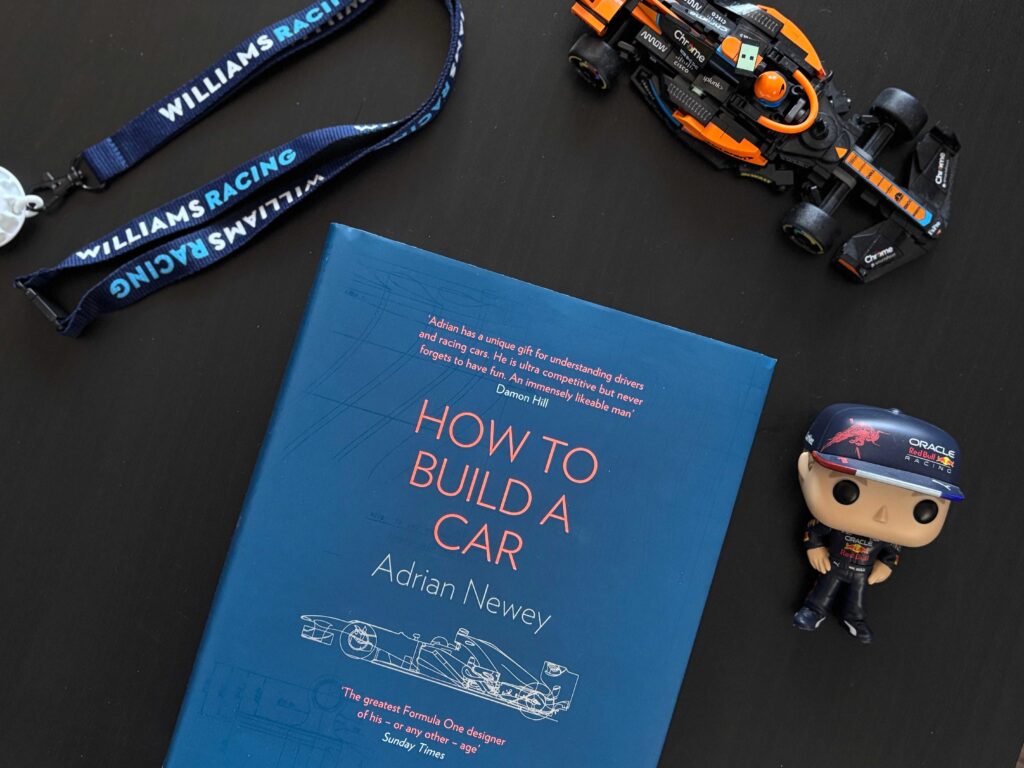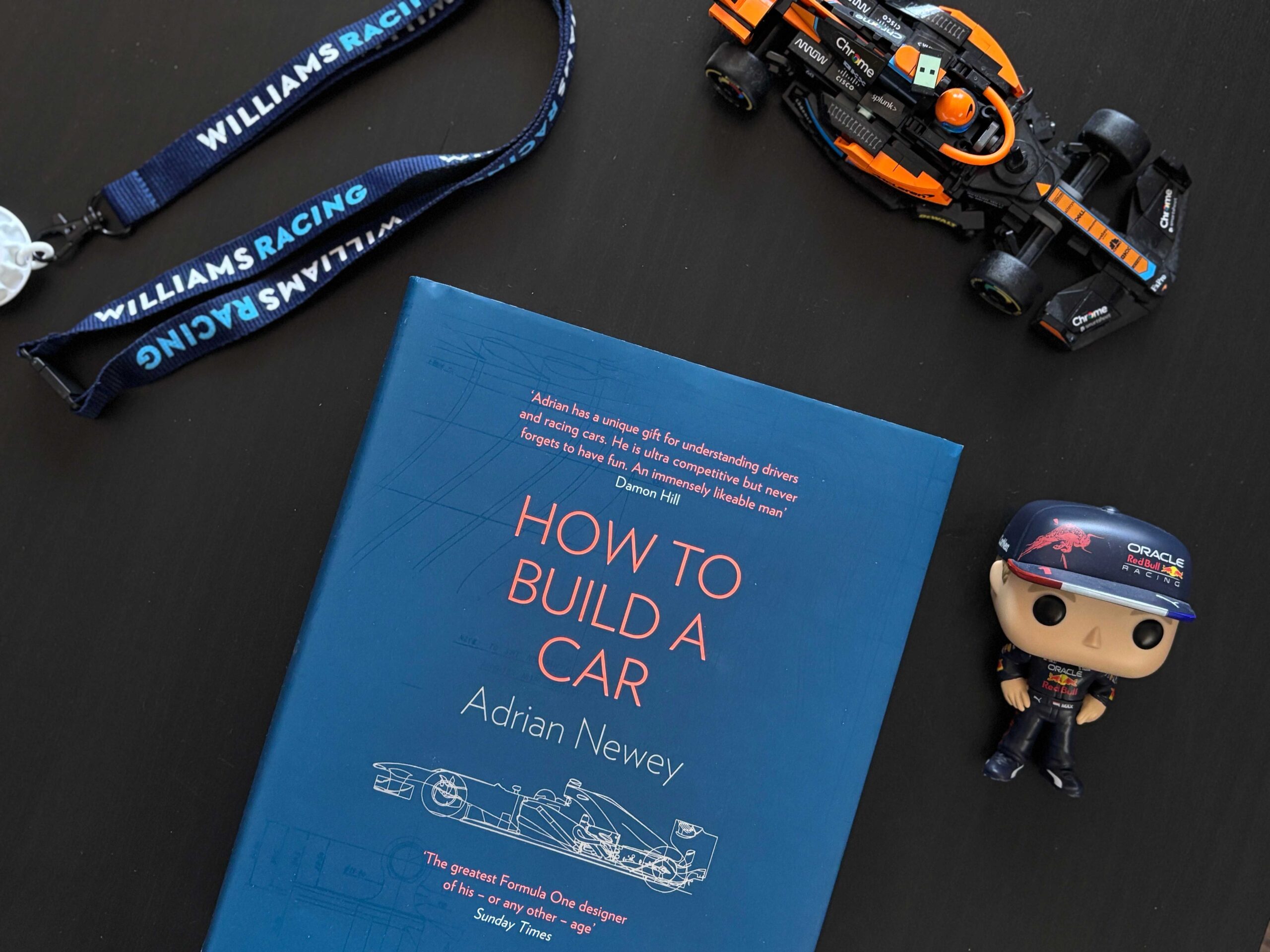Adrian Newey is an engineer and he writes like an engineer. (If you don’t know who he is, well, he is the most successful car designer in F1 history. His cars won several championships, both drivers and constructors – in the color of Williams, McLaren and Red Bull, the latest one being the 2023 Red Bull car). He writes very structurally, logically, with very few emotional and a lot of technical parts.
As I am not an engineer I think most of the details was lost for me. Newey writes in the acknowledgements that he had to explain things, and he did his best! But I don’t think there is a lot more he could have done for someone who has never before known which car parts do what, let alone the English terms for those parts. Of course, I’m not a stupid person, I mostly understood the gist of what he was saying, but only on a very basic level.

With this being said, I loved the book. I have to admit, I had to get through the first quarter, where he recollects his childhood and his first years in motorsport (that was in lower category Formula and Indycar), none of which I could connect to at all. I’m not sure how I managed to get over that part, but I’m glad I did, because from the moment I had a grasp on the big picture (aka F1 history), I had a much better time. (And once again, kudos to Will Buxton’s Grand Prix book, where I learnt a LOT about F1 history and which made it possible for me to have a general understanding of the sport’s past.)
Even though the technical details were kind of a background noise to be (despite them being over half of the book), I enjoyed getting a glimpse of the working methods of Newey. My favorite parts, though, were the ones where he talks about how he experienced certain things, like championship wins or struggles. What touched me the most was Senna’s accident, because Newey not only was there in real life, he was a participant of the events. So much so that he even had to defend himself in court to prove that Ayrton’s death wasn’t caused by a design failure. That investigative part where he analyzes what had happened and what might have caused it was my favorite part in the whole book. Once again, I’m not an engineer, but reading that made me want to be one, because I just admire how methodical that was (this theme goes through all of his work, that is very clear).
Unfortunately, the book ends with 2014, even though I would have happily read more. Especially now that we are at the dawn of the Aston-Newey era. I would have been interested in his thoughts about the Max Verstappen and Red Bull dominance and of course why he decided to leave. There are theories, ideas, even he said some things about why he joined Aston, but it would be interesting to read it how he sees it in hindsight.
Anyway, I highly recommend this book, but only if you are comfortable with a lot of engineering explanations, and it also helps if you have a somewhat good understanding of F1 history starting from the late 80s. This is a more advanced level book, you have to be pretty determined to read it, if you are only interested in F1, but it is also very rewarding in the way that it makes you think, but it also makes you understand a lot of things, and I think it also gives a very good recollection of the atmosphere of racing in the different decades. Not to mention, reading it is a great method to survive the winter break.

